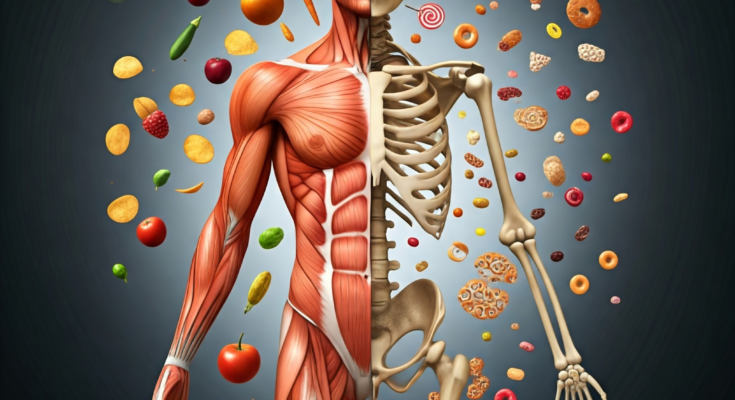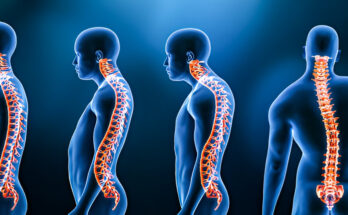A recent study has highlighted a concerning connection between diets high in ultra-processed foods and increased intramuscular thigh fat, a condition linked to weaker muscles and a higher risk of knee osteoarthritis. This groundbreaking research reveals how diet plays a critical role in maintaining joint health and avoiding degenerative diseases like osteoarthritis.
Key Findings: How Ultra-Processed Foods Affect Muscle Health
The study showed that individuals consuming diets high in ultra-processed foods had significant intramuscular fat deposits in their thighs. Intriguingly, these findings were consistent regardless of calorie intake or physical activity levels.
Fatty deposits within muscles can weaken them, diminishing their ability to support cartilage and protect knee joints. This phenomenon is linked to reduced knee function and an increased likelihood of osteoarthritis. The results of this study were shared at the Annual Meeting of the Radiological Society of North America (RSNA) in December 2024.
Understanding Ultra-Processed Foods:
Ultra-processed foods are industrially manufactured products designed for taste, convenience, and affordability, often at the expense of nutritional value. They typically contain five or more ingredients and are high in sugars, unhealthy fats, and additives like flavor enhancers, preservatives, and artificial colorings. Examples include:
- Sugary beverages like soda and packaged juices
- Snacks such as chips, cookies, and candy
- Processed meats and frozen meals
Study Insights
Experts suggest that ultra-processed foods may contribute to fat accumulation through increased insulin resistance and inflammation caused by refined sugars, hydrogenated fats, and processed grains.
Dr. Zehra Akkaya, the study’s lead researcher, noted that MRI images revealed “fatty degeneration of muscle” in individuals consuming ultra-processed foods. This occurs when fat gradually replaces muscle fibers, reducing muscle strength and function.
Researchers analyzed MRI scans from 666 participants involved in the Osteoarthritis Initiative, a nationwide study. The average participant was 60 years old with a BMI of 27, and none had been diagnosed with osteoarthritis at the time of the study.
The Good News: Muscle Regeneration is Possible
The study offers hope, highlighting that correcting one’s diet can reduce intramuscular fat, allowing muscle to regenerate. Stronger muscles can better protect cartilage, slowing or halting joint damage. While existing joint damage cannot be reversed, lifestyle changes can prevent further progression.
Preventing Knee Osteoarthritis
Experts agree that lifestyle choices play a pivotal role in preventing knee osteoarthritis. Factors such as poor diet, inactivity, obesity, and repetitive movement patterns increase the risk of developing the condition.
Here are some actionable steps to reduce your risk:
Adopt a Healthy Diet
Focus on whole, nutrient-rich foods like fresh fruits, vegetables, lean proteins, and healthy fats. Avoid sugary drinks, processed snacks, and packaged meals.Maintain a Healthy Weight
Obesity is a significant risk factor, as excess weight places additional strain on joints, accelerating cartilage wear.Stay Physically Active
Regular exercise strengthens muscles, supports joint health, and prevents fat accumulation. Low-impact exercises like swimming, walking, and yoga are particularly beneficial.Address Biomechanical Issues
Wearing proper footwear and maintaining good posture can reduce stress on joints.Consider Gender-Specific Risks
Women, particularly those going through menopause, may face additional risks due to hormonal changes.
Diagnosing Intramuscular Fat
For those concerned about thigh fat deposits and osteoarthritis risk, several diagnostic tools are available. Clinicians may use circumference measurements, skinfold tests, or bioelectrical impedance analysis (BIA). Advanced tools like iDXA scans provide precise measurements but are less accessible due to cost and specialization.
A Holistic Approach to Joint Health
The study underscores the importance of a preventive approach. As Dr. Paul Arciero emphasized, “Healthy eating is the most effective lifestyle strategy to combat excess fat accumulation and maintain overall joint health.”
By prioritizing a nutrient-rich diet, staying active, and maintaining a healthy weight, individuals can significantly reduce their risk of osteoarthritis while promoting stronger muscles and healthier joints.
Conclusion:
Ultra-processed foods may be convenient, but their long-term impact on muscle and joint health is profound. By making conscious dietary and lifestyle choices, you can protect your joints, improve your overall health, and embrace a more active and pain-free life.




